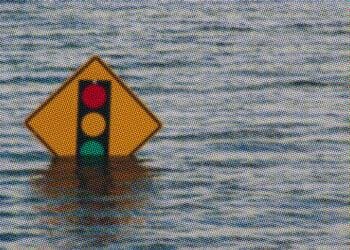Natural disasters – and their consequences – come in many forms, each with potentially devastating and even deadly outcomes. Skillsoft’s Allison Gruenigen discusses how an organization can protect the business and its employees.
While summer comes with many benefits, such as warmer weather and longer days, it also leads to potential and sometimes disastrous weather conditions and natural disasters. These can include high winds, flooding, wildfires, mudslides, dangerous heat temperatures and tornadoes.
In recent decades, these events are occurring with higher frequency and severity, creating a bigger expense for the companies and community members that are impacted. In fact, in 2018 alone, the United States suffered 14 weather and climate disaster events, with losses exceeding $1 billion each. Now that we are midway through 2019, the country has already faced six weather and climate disasters. Cleary these come at a cost, and businesses should look for ways to protect their employees, assets and customers.
The Importance of a Plan
Natural disasters and their consequences come in a variety of forms, each with potentially devastating outcomes. One key way to protect businesses and mitigate downtime is to develop a natural disaster and business continuity plan. It’s astonishing how few companies have invested time into creating or updating such plans over time. Thus, according to a Nationwide Insurance study, it was found that two in three businesses do not have a written disaster plan, and 21 percent of small-business owners without one say that it is not a high priority.
Employers have a responsibility to ensure that the work environment is safe and that employees are aware of potential hazards, even during recovery phases. For example, after a flooding incident, employees may be cleared to return to work but later find unexpected issues of mold or electrical damage. Employees need to be made aware of these hazards in a timely manner, provided with instruction and training on those hazards and supplied personal protective equipment (PPE) if required, and businesses must put in place administrative/engineering controls to protect their employees.
Creating a Business Continuity Program (BCP) and Emergency Action Plan (EAP)
The first step in building an effective plan is to assess the potential risks. The biggest natural disaster risks to a business will vary depending on region/weather or type of business. If there are offices or employees in multiple regions, the plan must address all regions. Once the risks are evaluated and reviewed by key stakeholders, a business continuity program should be drafted and formalized.
A BCP is created to ensure that a process is in place to enable continued operations during a time of emergency or disaster with minimal impact. A BCP should include the process for identifying the people who can implement the plan; strategic, mitigation, recovery and continuity plans; and a training/education program for management and employees. One of the best resources available for organizations is Standard 1600 on Disaster/Emergency Management and Business Continuity Programs developed by the National Fire Protection Association. This standard not only establishes a common set of criteria for disaster management, emergency management and business continuity programs, but also lays out the requirements for each organization to assess its current plans. Always check to ensure your plan meets any state- or industry-specific regulations.
Another essential part of natural disaster preparedness is an Emergency Action Plan. As defined by OSHA, “the purpose of an EAP is to facilitate and organize employer and employee actions during workplace emergencies.” An effective EAP should cover various potential worksite-specific hazards such as fires, chemical spills, active shooters and natural disasters. The EAP should address specific safety issues and protocol for each potential risk and disaster.
In general, the primary purpose of an EAP is to prioritize employee safety. Regular employee education is key to achieving this goal, and experts recommend requiring emergency preparedness training and conducting routine drills to best prepare for the main potential risks. Once the plans are completed, hold periodic “tabletop exercises,” during which your teams gather and talk through disaster responses. This will provide the response team with the opportunity to think through the steps and identify any issues or gaps. As businesses grow, change or acquire new customers, suppliers or employees, the strategy will need to be updated to achieve the overarching goal of sustaining a successful business and providing a safe environment for your employees.



 Allison von Gruenigen is Environmental, Health and Safety Product Manager at
Allison von Gruenigen is Environmental, Health and Safety Product Manager at 





